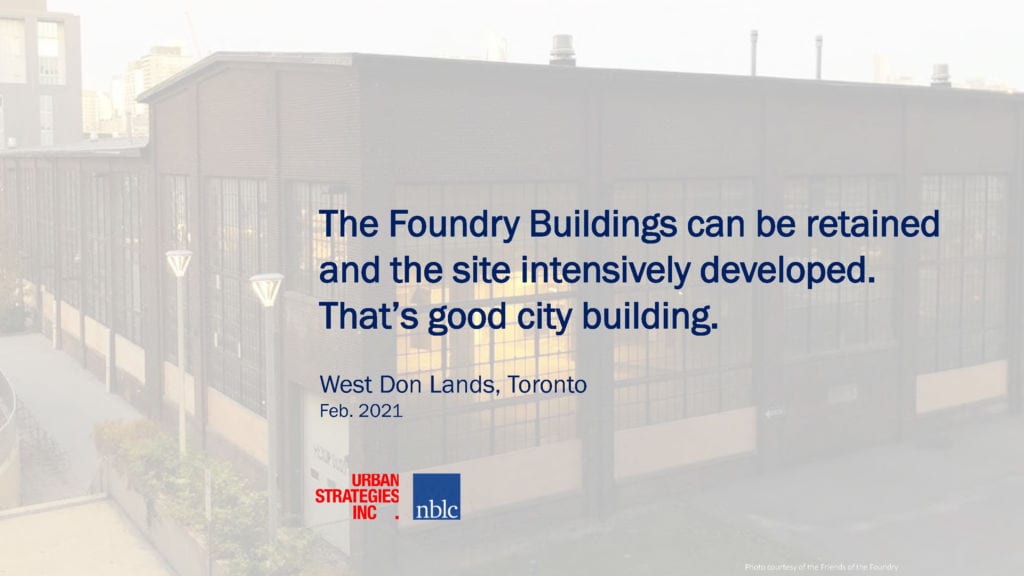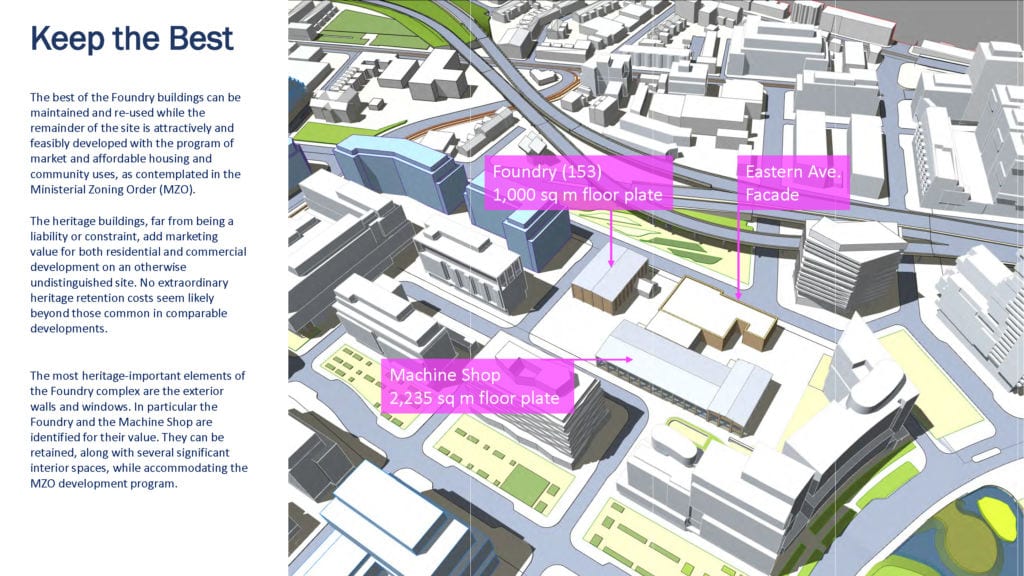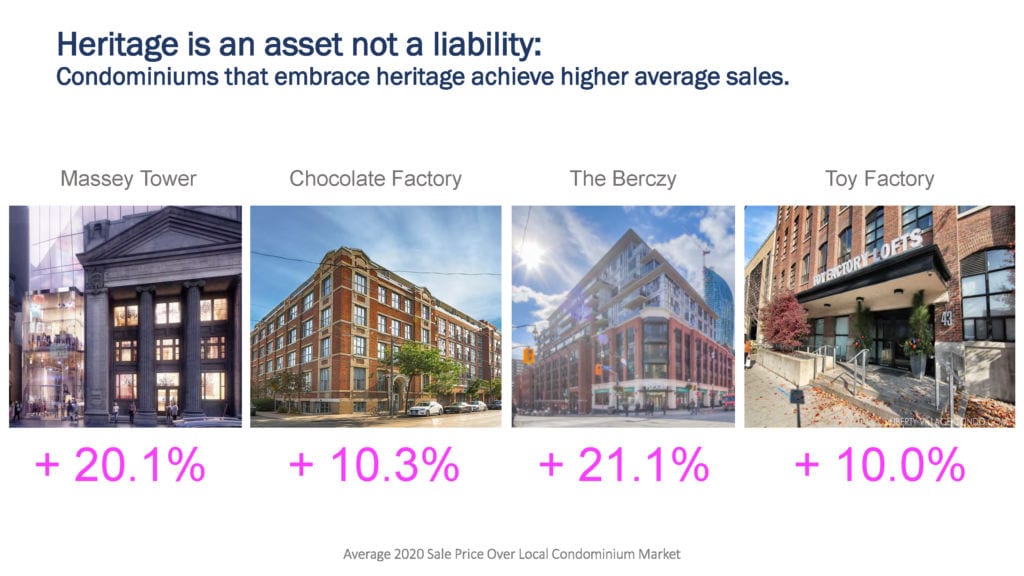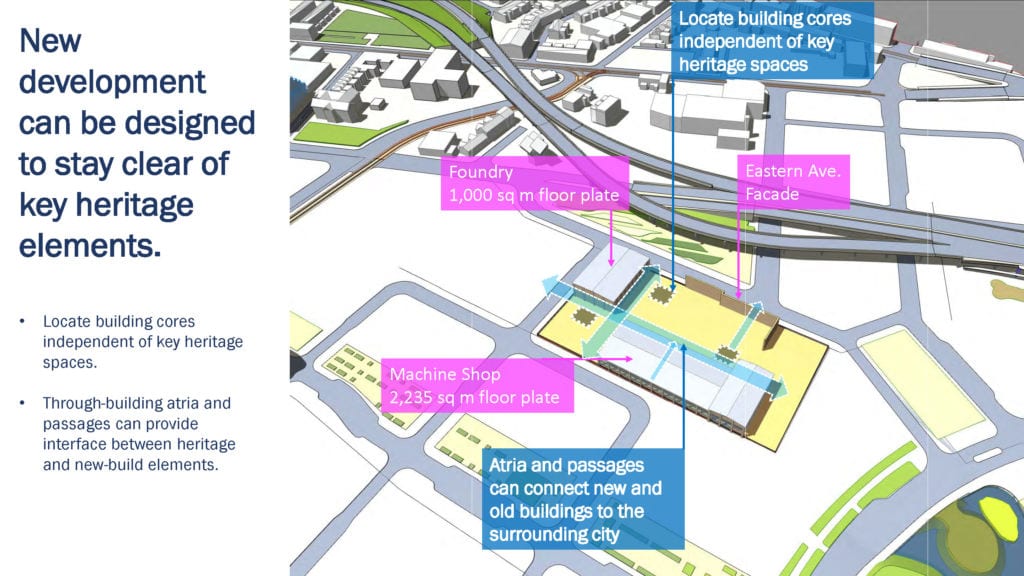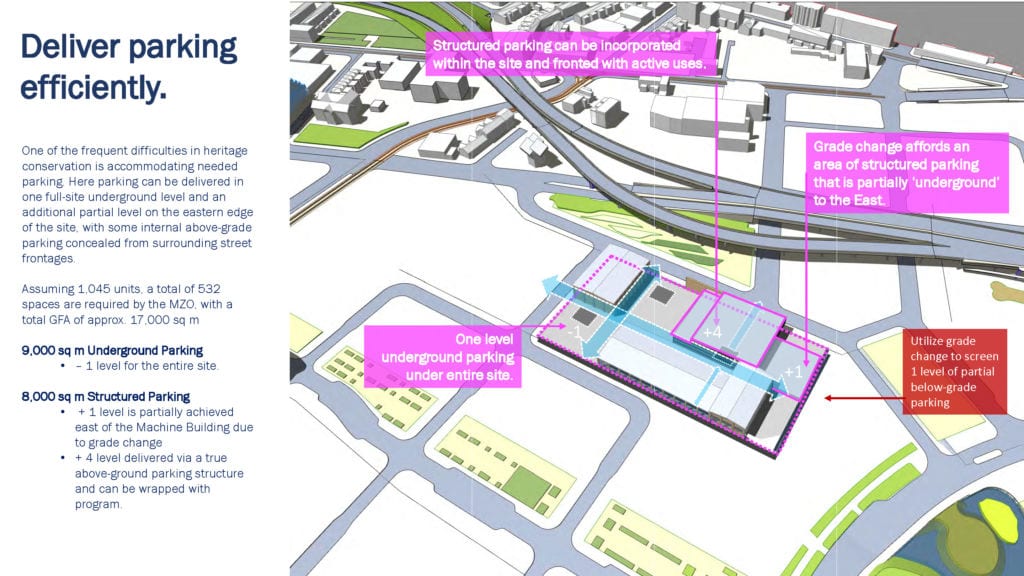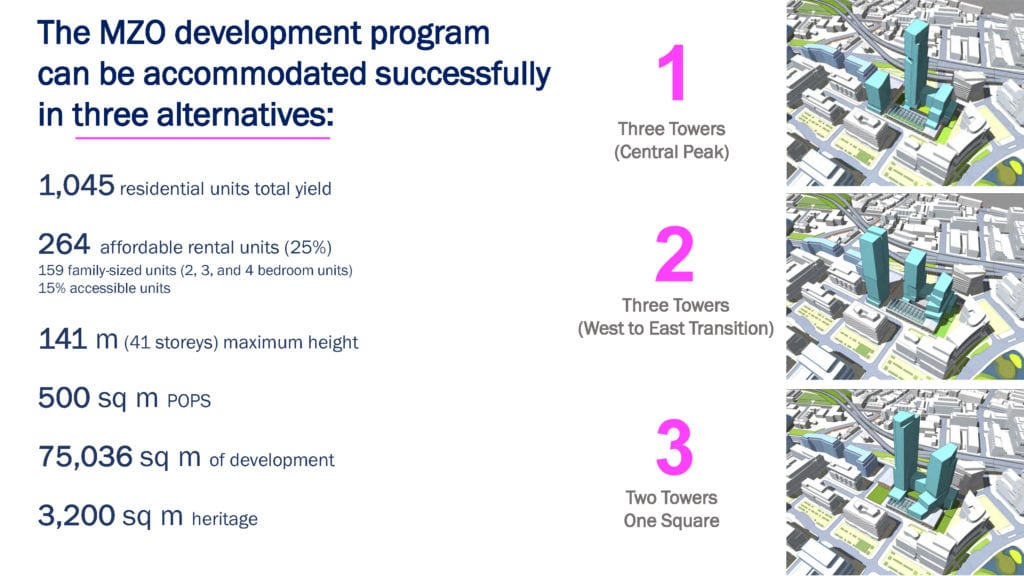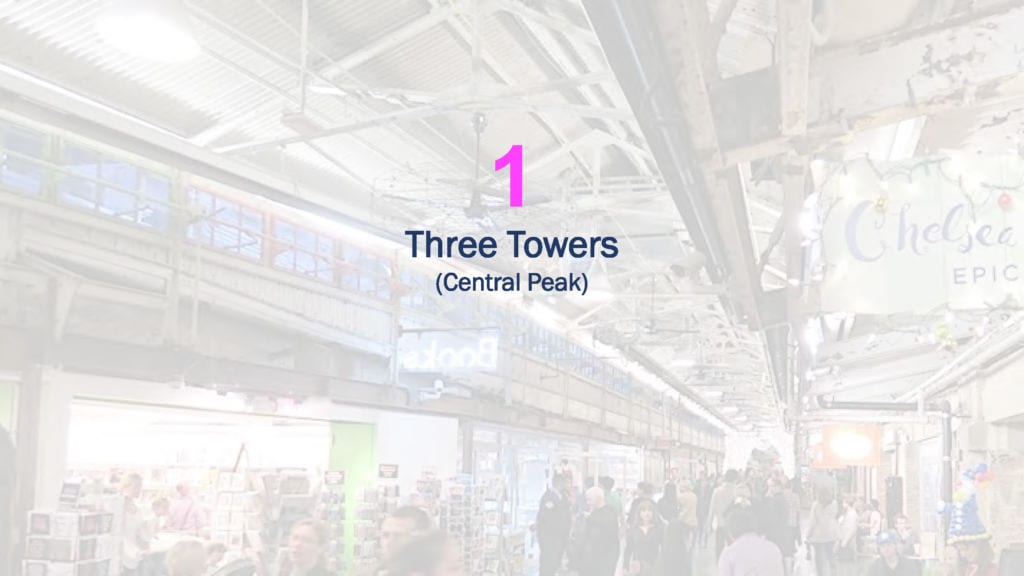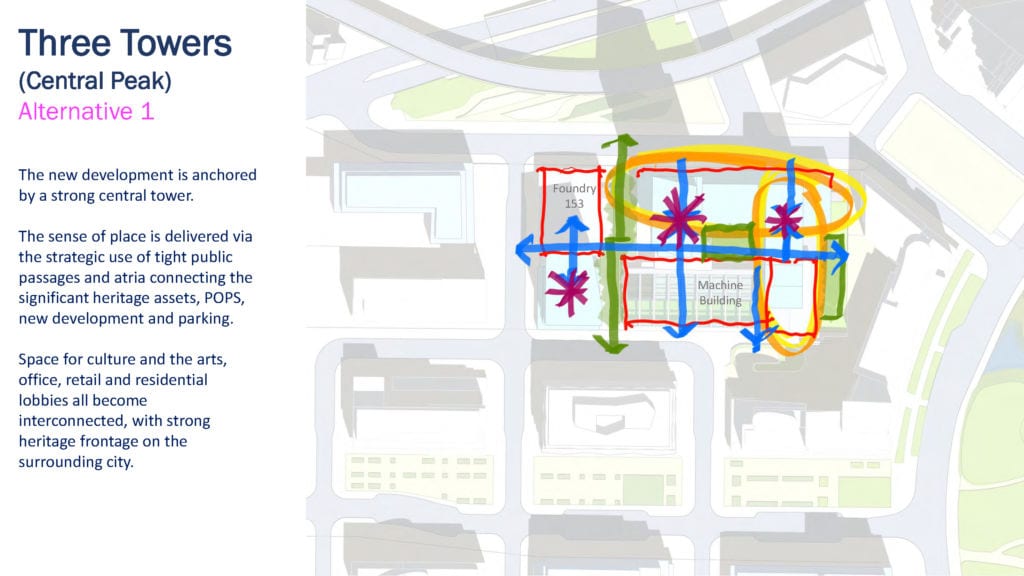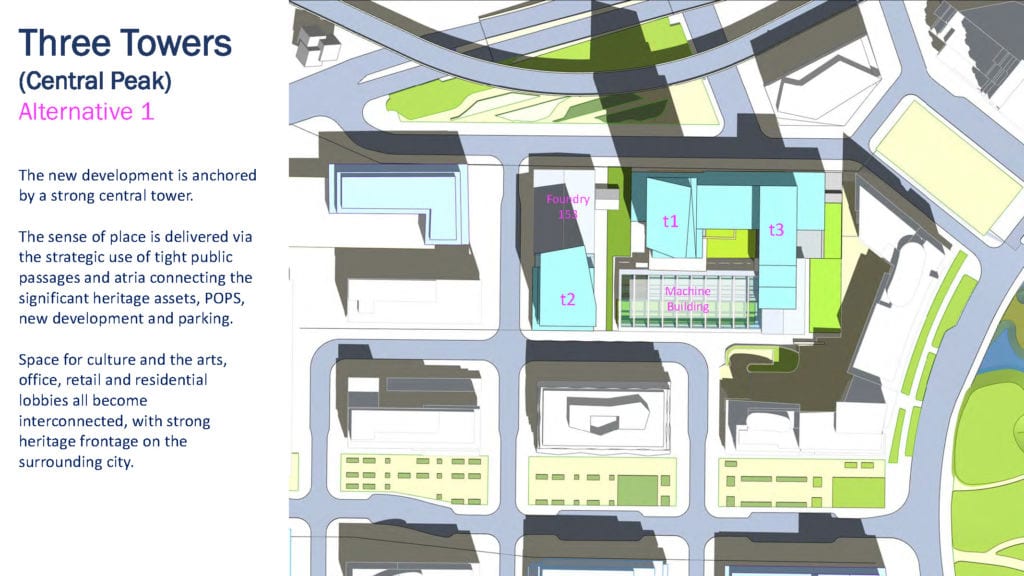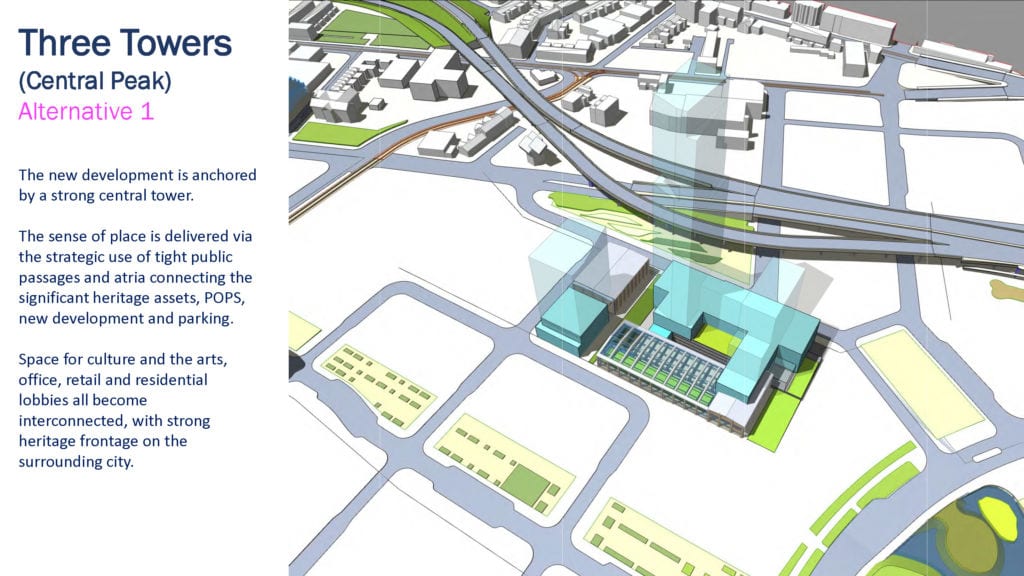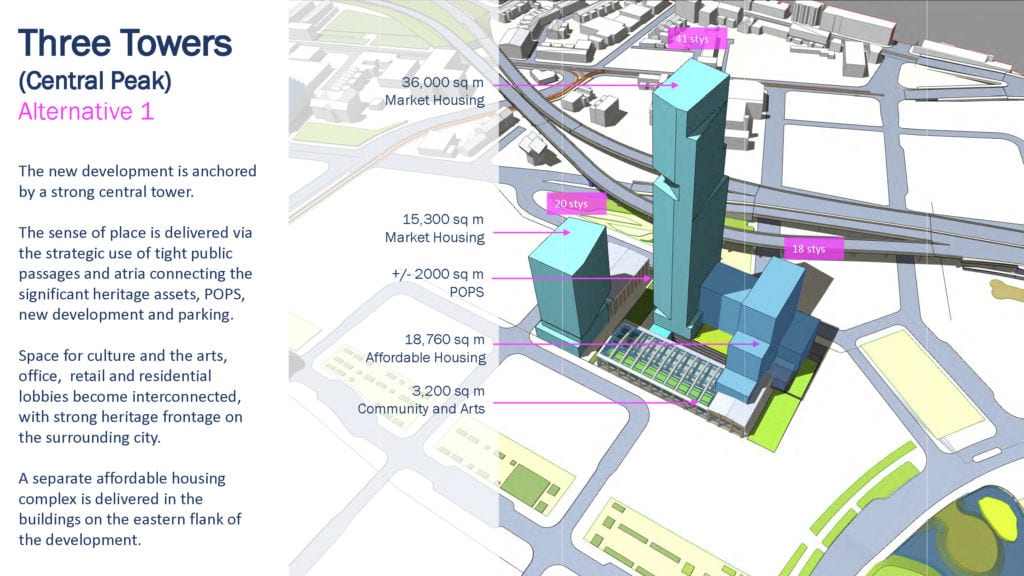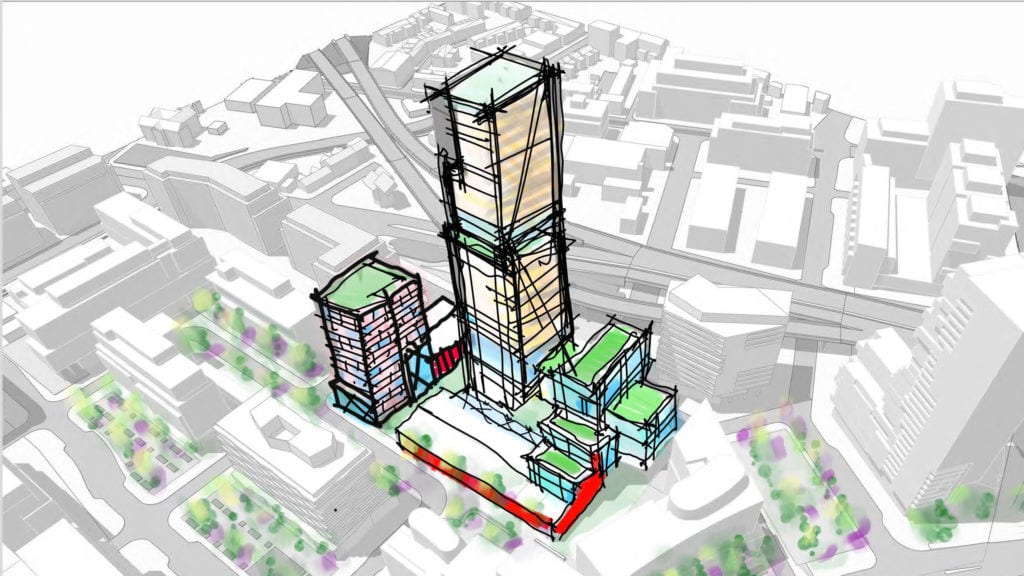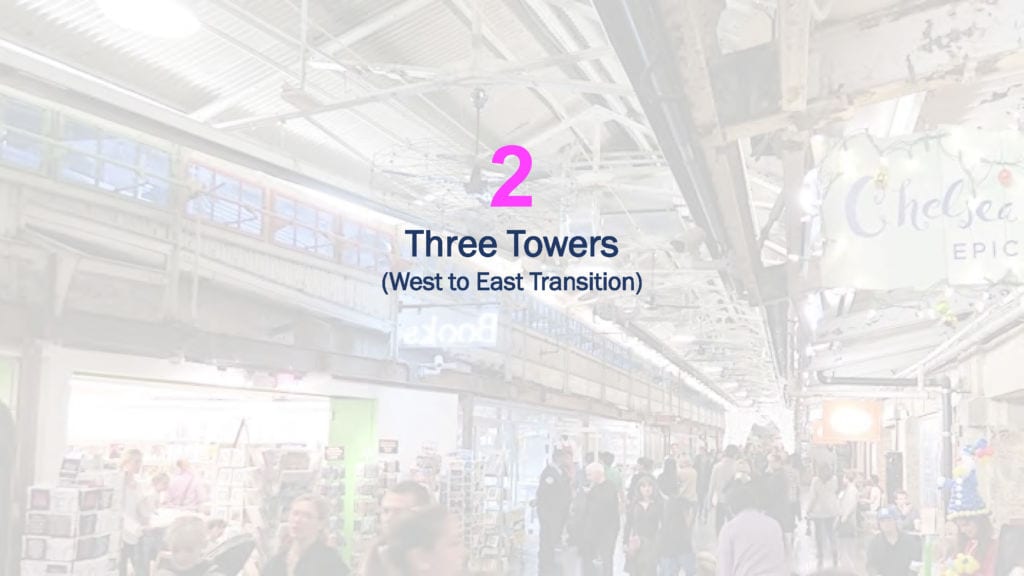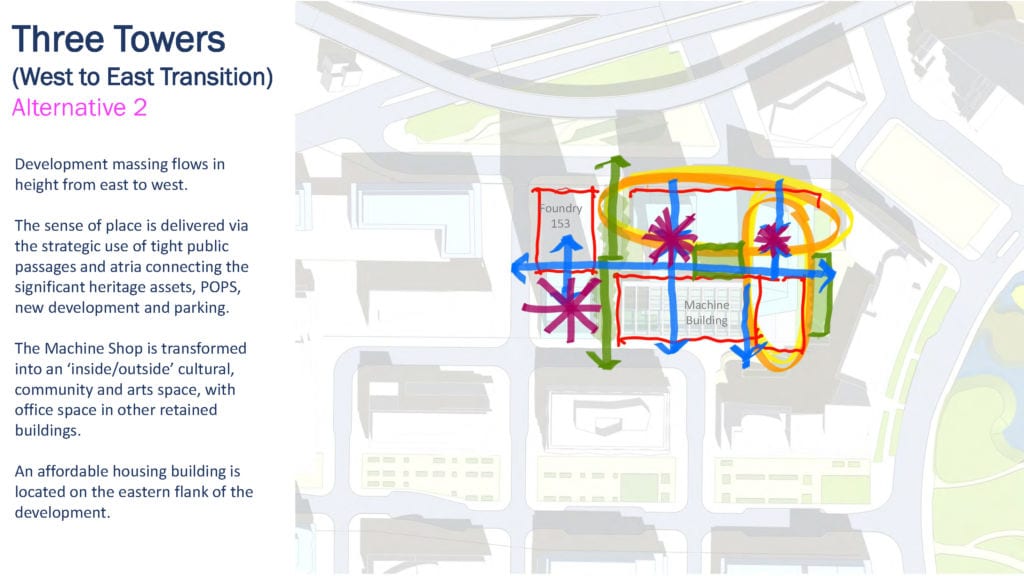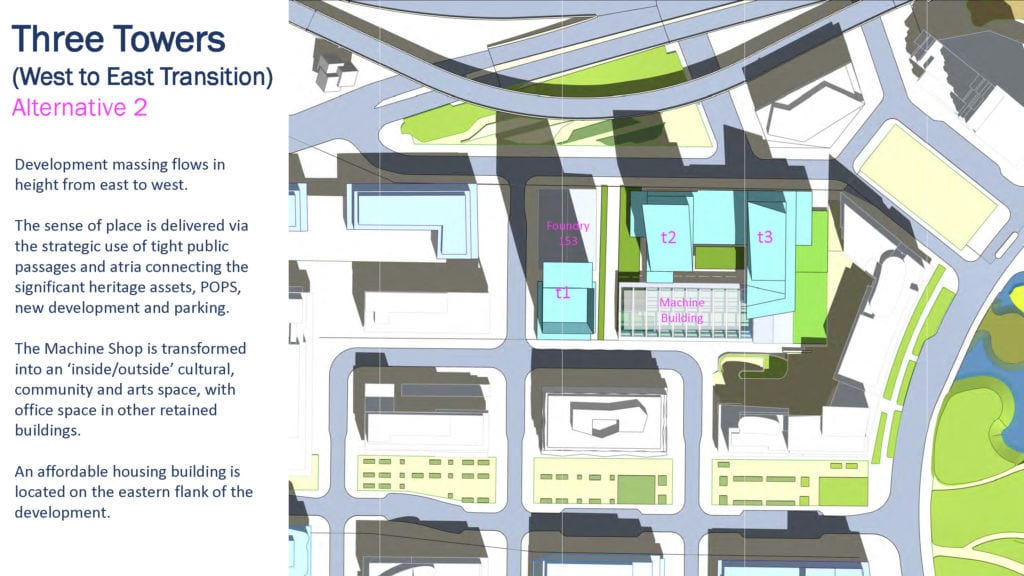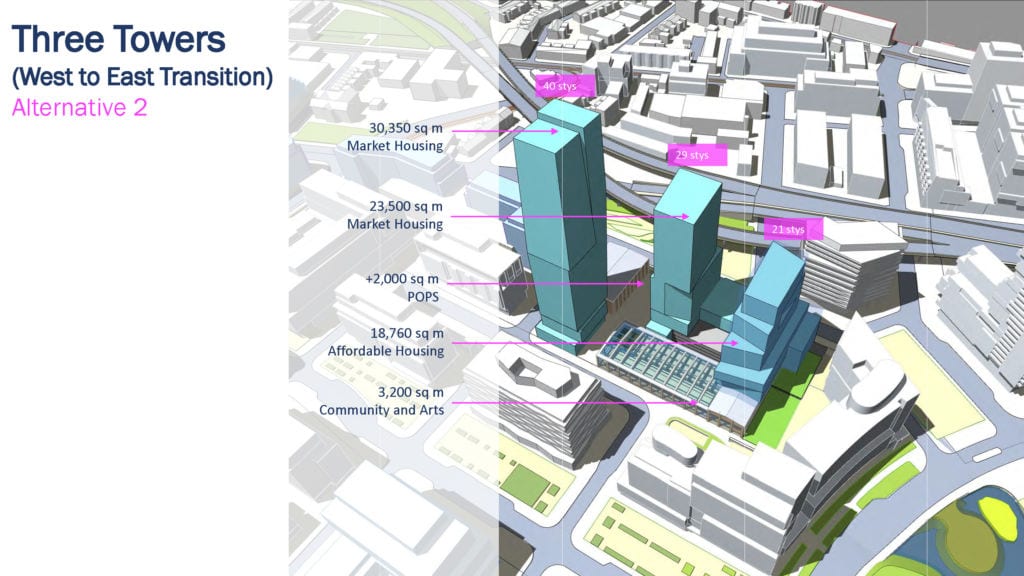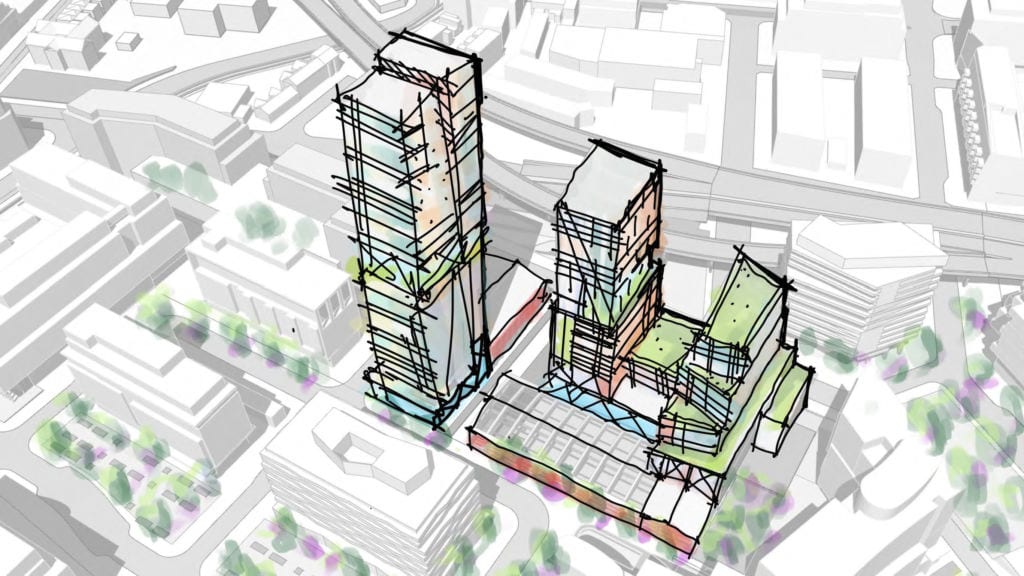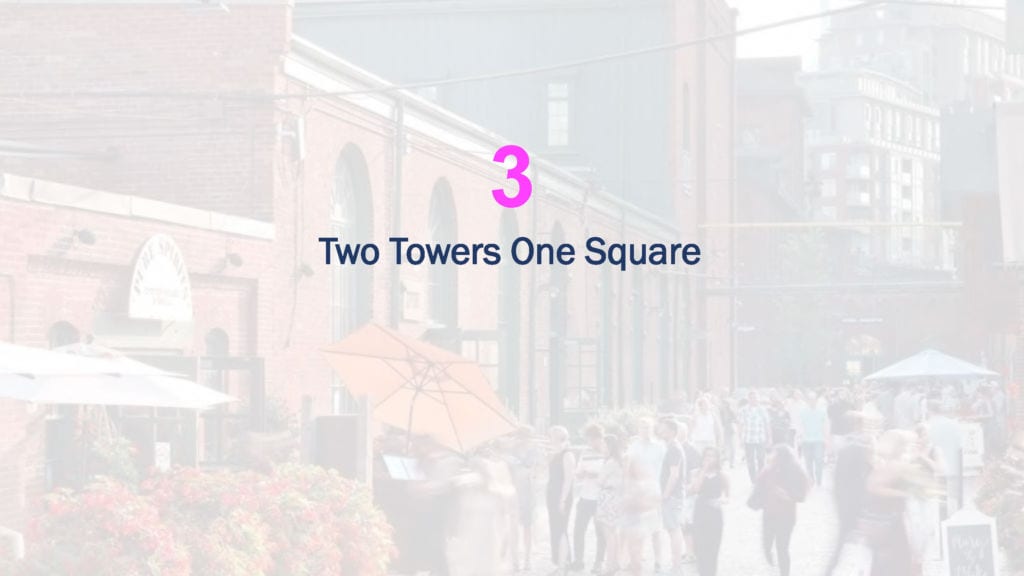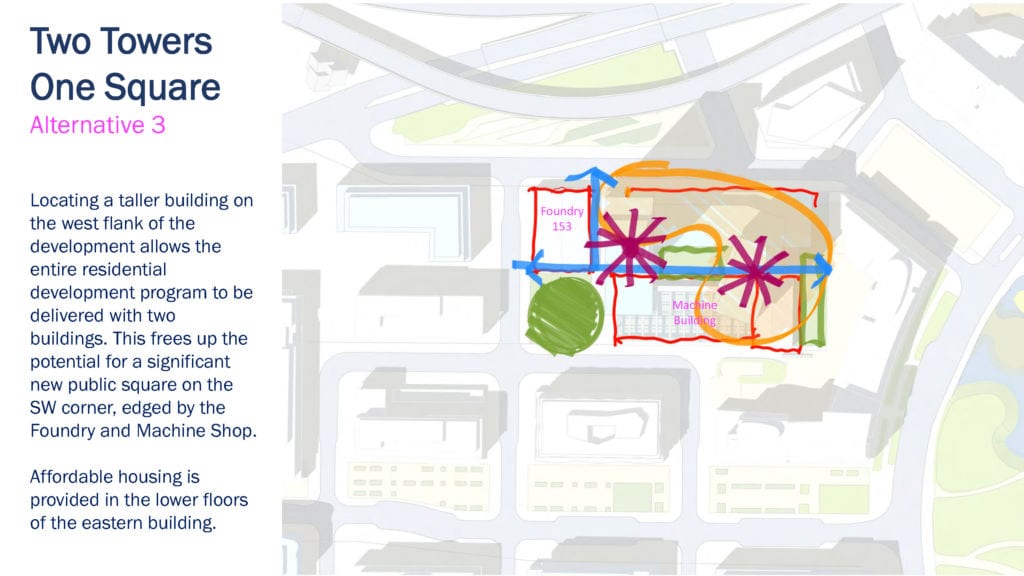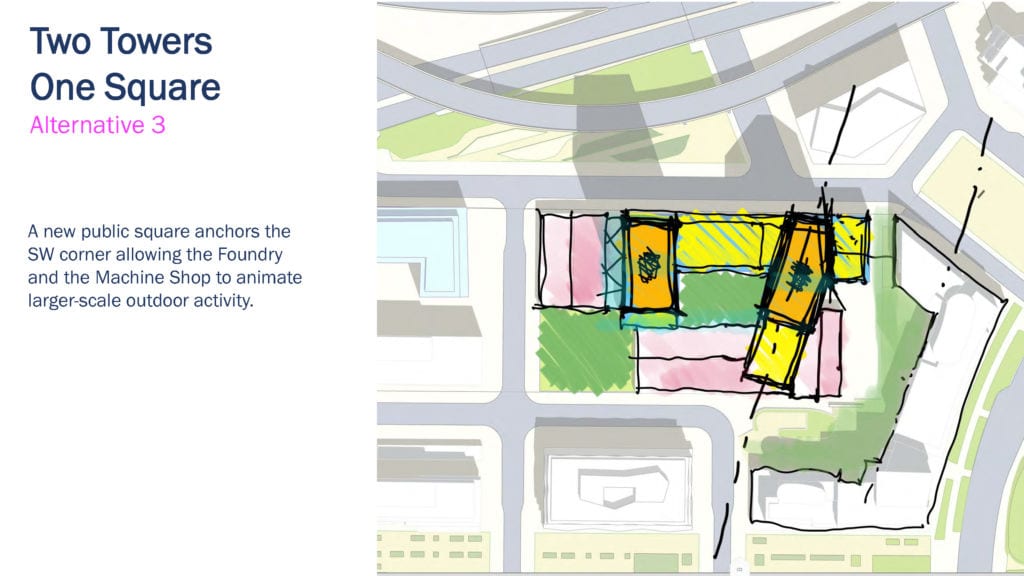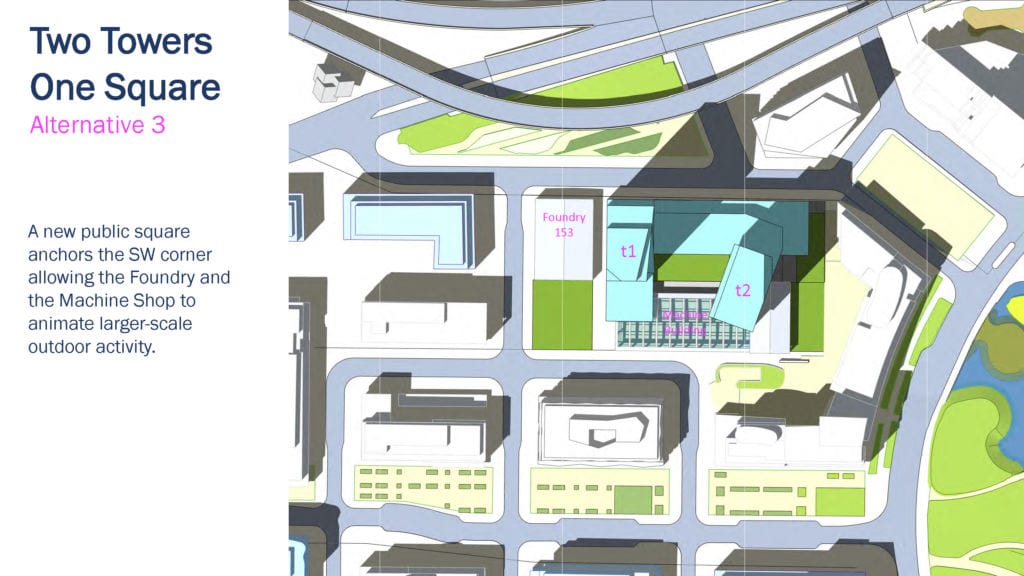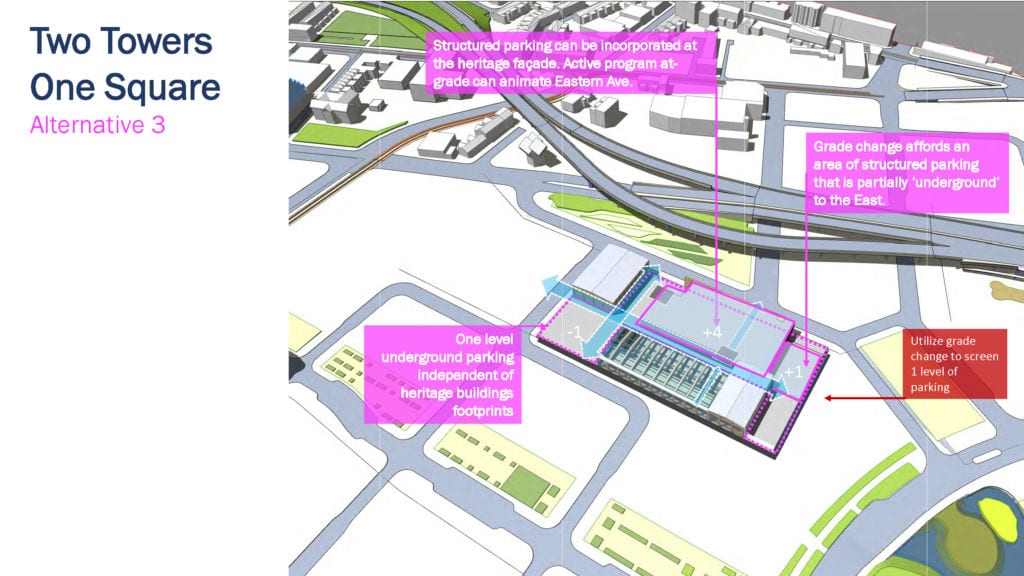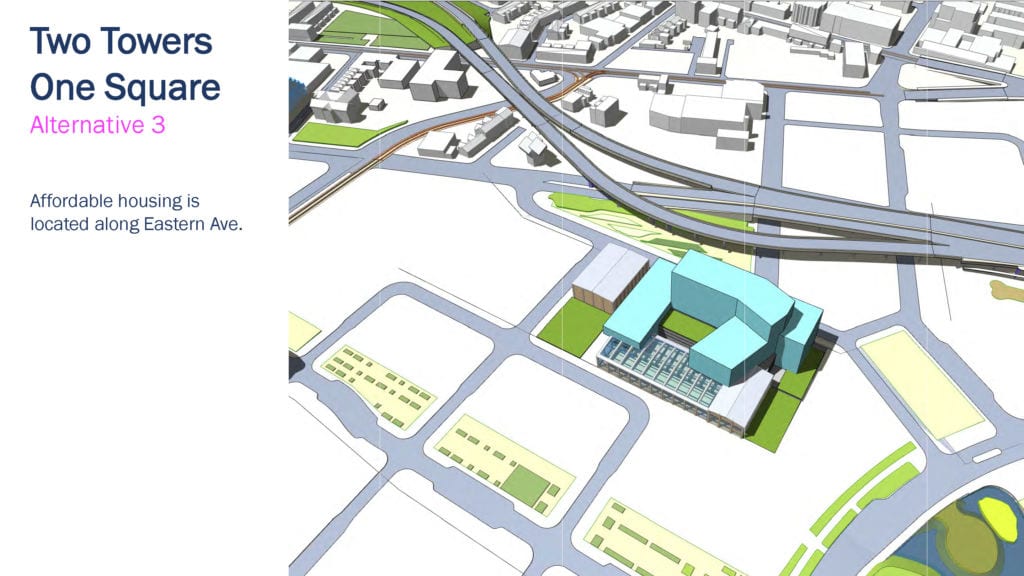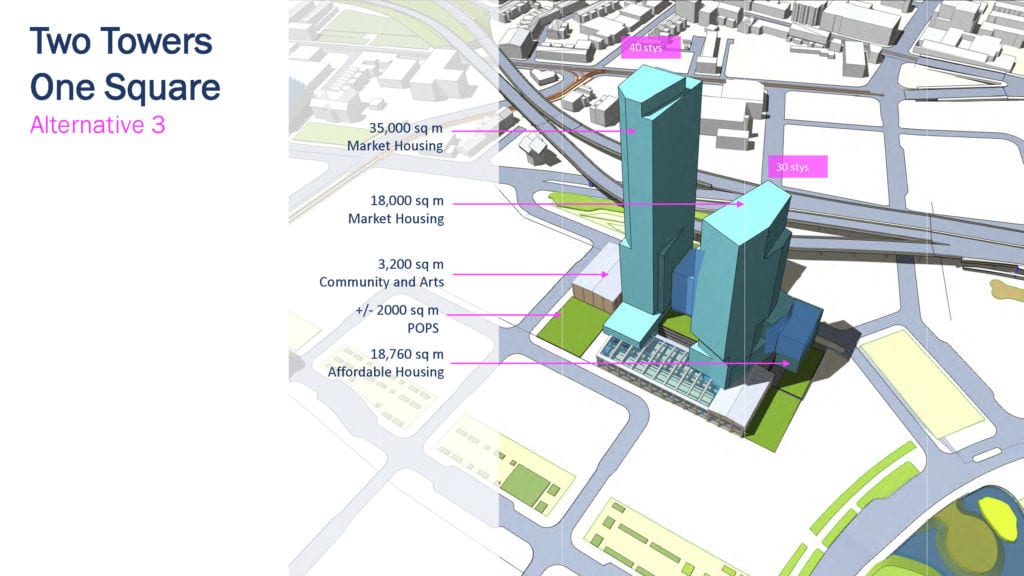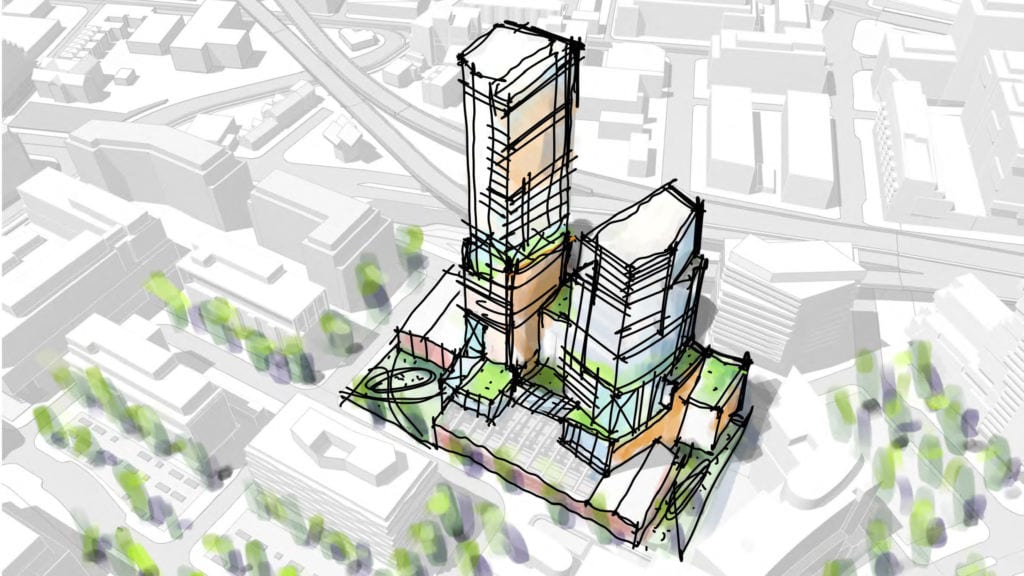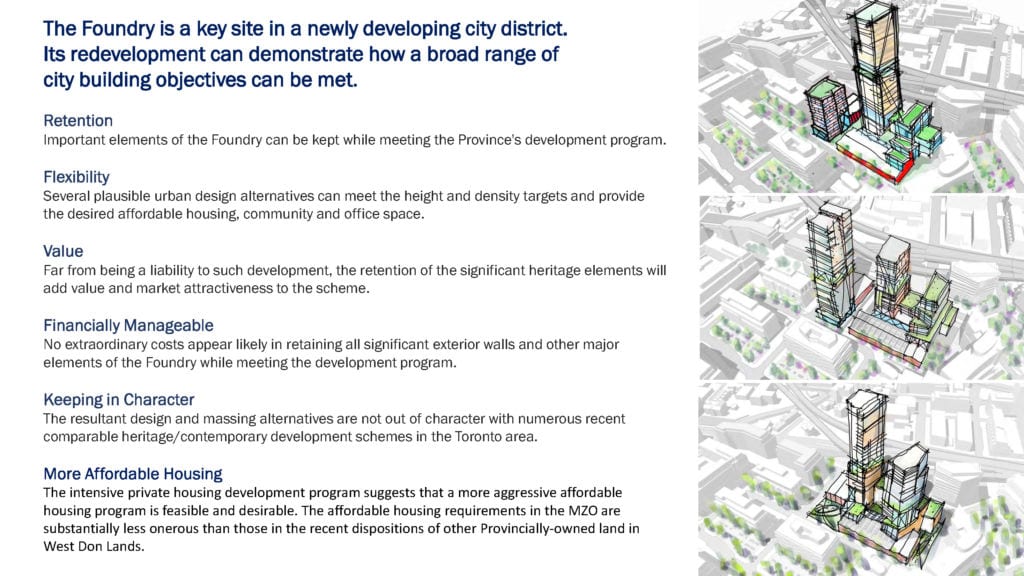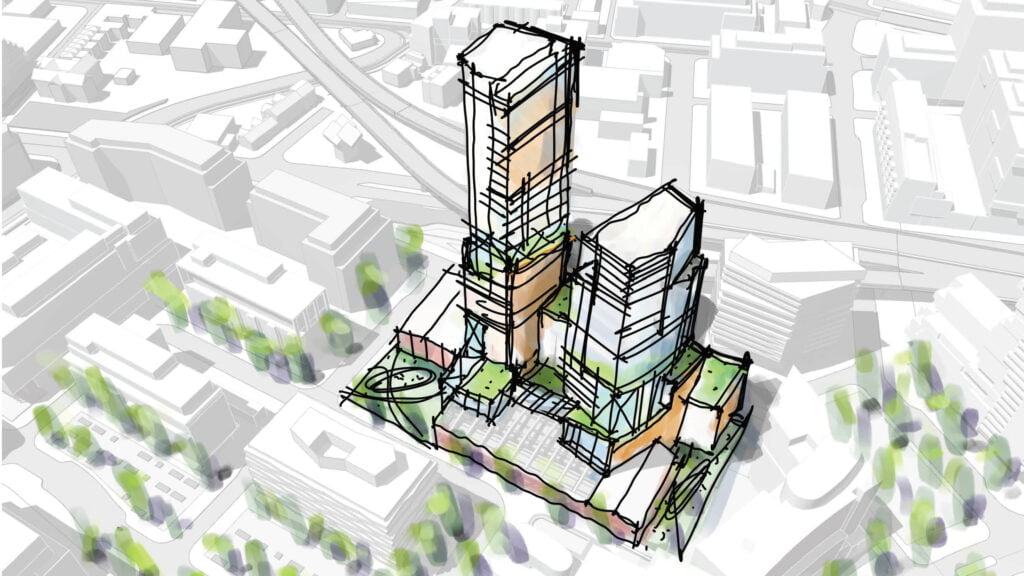
In 2021 the Province of Ontario enacted a Ministerial Zoning Order to demolish the century old Dominion Wheel and Foundries Company Manufacturing Complex in the east end of downtown Toronto and deliver much-needed housing. This action subsequently sparked a debate about heritage retention, affordable housing and the local planning process.
In February 2021, Urban Strategies and N.Barry Lyon Consultants (NBLC) engaged in recommending solutions to the Foundry debate. By contributing quick site concepts — developed independently by our team of Urban Designers, Planners, and Land Economists — we hopefully added to the meaningful dialogue among community stakeholders, elected officials, investors and government decision-makers about the future of this incredible asset. Cities are complicated places, and they benefit from complex solutions.
Our position: the Foundry Buildings can be retained and the site intensively developed. That’s good city building.
The Foundry site on Toronto’s West Don Lands is a key parcel of land in a rapidly developing area of the city. This precinct is already demonstrating how bold, progressive, sustainable and inclusive city building can transform our urban environment. We believe that the Foundry can continue this tradition.
Melanie Hare, FCIP, RPP, Partner with Urban Strategies and former Vice-Chair, Ontario Heritage Trust states,“We strongly feel that the conservation and adaptive re-use of the Foundry’s key heritage components are possible, while achieving amenity-rich, complete community objectives and ambitious intensification. We also believe that the affordable housing targets set by the Province can be met, and even exceeded given the scale of development permitted by the Ministerial Zoning Order.”
In fact, conserving the important heritage components of the Foundry site is not only compatible with future development, it will also enhance the tangible place-making and market value for the site.“Condominium buildings that can express a unique sense of identity through the integration of heritage features not only create more interesting neighbourhoods, but have shown to generate above-average sale values,” states Mark Conway, President & Senior Partner, NBLC.
The following ideas investigated how to best reflect diverse community aspirations while addressing housing and economic realities. Our recommendations, along with the ideas of many other contributors to the debate, are now being integrated to ensure the site remains a unique Toronto landmark.
